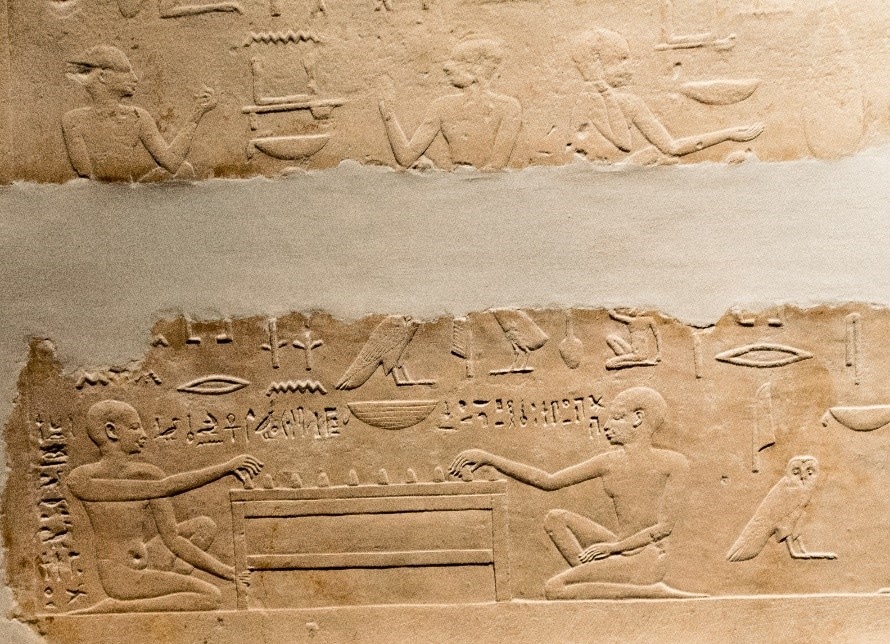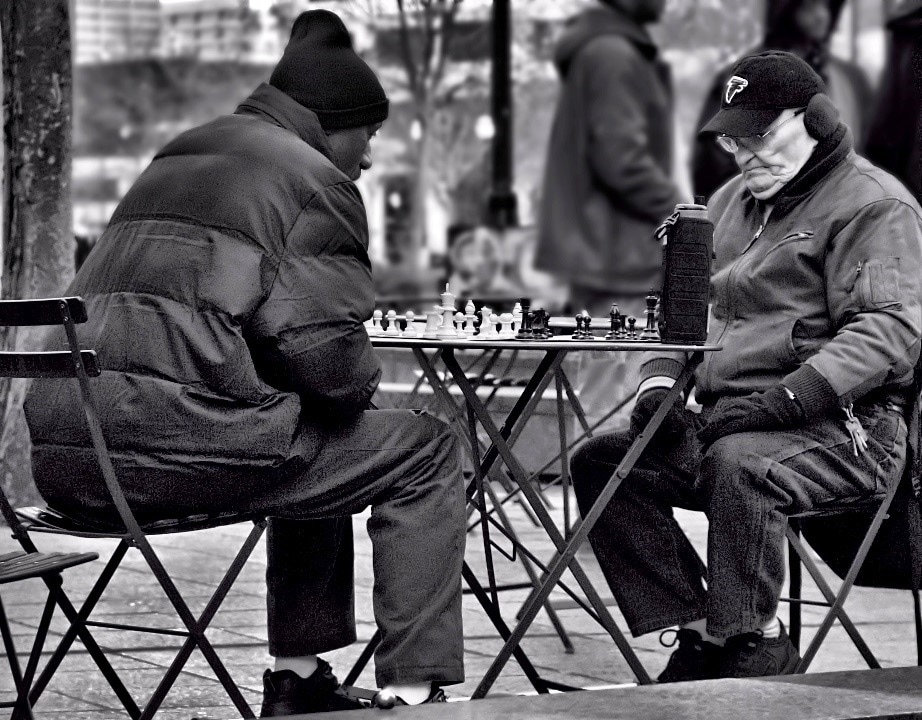Which brings me to Egyptian art. On a certain level, one can discern elements of street art in Egyptian wall painting and objects from tombs. This image which I photographed at the Walters Art Gallery in Baltimore was part of the Egyptian collection depicting "Daily Life In Ancient Egypt.” This image shows two men playing the board game senet. This scene included other games players and musicians and was presumed to be a bas relief on the lintel of a doorway in the tomb of Ankh-ef-en-sekhmet.
Compare the Egyptian players with these two chess players in Atlanta, Georgia. Neither is touching a piece, but both are focused on the board. Their hands rest on their legs. It is a scene composed similarly to the Egyptian one, essentially two game players and a board, not looking at each other but at their board and contemplating their moves.

